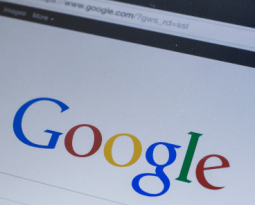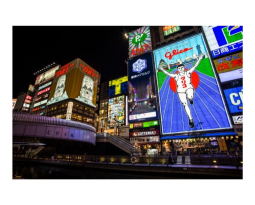Digital marketing is an ever-expanding industry that helps a business grow through the utilization of search engines.
However, have you ever considered that there are rules for websites on the internet? Black hat SEO tactics are practices used that specifically go against the guidelines of a search engine that allow a page to gain a higher ranking. Search engines often catch black hat practices, and it penalizes the sites for using such techniques. Although black hat practices are discouraged, most tactics are not illegal.
Here are some common black hat tactics to avoid when optimizing a website.
1. Keyword stuffing
Keyword stuffing is the practice of adding irrelevant keywords to a page’s copy to improve its ranking on a search engine. Google describes the method as putting keywords in lists, groups, or out of context in a page’s content to manipulate rankings. This practice takes away from the user’s experience on a site, and it ultimately hurts the site’s ranking.
Instead of stuffing keywords all over your page, focus on creating quality content that provides the user with a positive experience. The best practice is to use keywords naturally throughout a page, incorporating them into the material. Google rewards pages that abide by its guidelines.
2. Cloaking
Cloaking is the practice of presenting one set of content to users and a different set of content to search engines. Typically, the user will request to see a page, and its contents will appear the same to the user and the search engine. However, pages which show different material to users and search engines are directly violating Google’s quality guidelines. Rest assured, white hat cloaking does not exist, which means Google outlaws any cloaking.
Are you unsure whether your site is cloaking? Google has a program called Fetch as Googlebot that will check your site from Google’s point of view to ensure cloaking isn’t happening. Another possible safeguard is searching your website’s code for a user agent that outlaws Googlebot.
3. Duplicate content
Duplicate content is the practice of copying content from a website and putting it on another page. Duplicate content goes against Google’s guidelines regardless of whether you have permission from the site that the content is copied. The simple way to think about duplicate content is like copywriting in school.
Duplicate content usually takes the form of copying authoritative information from a site and putting it on another website as if it were original. The best practice against this would be summarizing applicable information on a website and adding an external link to the original content.
4. Automated content
Automated content is the practice of generating content programmatically. This practice creates content to include keywords so that pages can rank higher on search engines. However, the material on these pages is usually hard to understand and sporadic.
Original content written in natural prose will always prevail over automated content. Google is capable of catching automated content, and it will lower page rankings because of it. Google looks for quality content in sites, and it is one of the key ranking factors it uses when looking at websites.
5. Hidden text and links
There was a time where internet marketers would put white text on a white background to insert keywords so that a user couldn’t see it, but Google would still register it. However, Google has not outlined hidden text has a violation of its guidelines. Hiding links throughout a site is also prohibited. Both practices will go unseen by a user, but Googlebot will find it, ultimately hurting your ranking.
Instead of hiding text, it is beneficial to make your site accessible to users and search engines. Images and videos optimized by adding in an alt attribute to describe the picture to Googlebot are both valuable. Both practices are favorable optimizations that can help a page increase its rank with a search engine.
6. Paid links
Paid links are the practice of buying or selling links to a site. Google strictly outlaws paid links because search results are being manipulated and harmed. Google will penalize both the buyer and seller of a link because they are both participating in black hat practices.
The best practice is finding links organically. Google rewards sites that are both externally and internally linked. Paid links are harmful to the websites that are organically obtaining links to incorporate into their website. Google has gone as far to create a page to report such activity, which is available here.
7. Doorway pages
Doorway pages are sites and pages created to rank highly for a specific search query. The user is led to multiple pages similar to one another that eventually ends up taking the user to the same page. Doorway pages also guide users to pages that are irrelevant to the initial search query.
It is essential to understand that localized landing pages are acceptable pages, but doorway pages are discouraged by search engines. Localized landing pages are created to guide users to their region in which they live, and they typically have quality content to answer the user’s query.
8. Malicious behavior
Malicious behavior is a broad category of black hat practices, but it is any activity that involves sites manipulating links, allowing downloads without the user requesting, and any automated installation of malware, viruses, and spyware. Malicious behavior is actively sought out by search engines so they can ban any suspicious activity.
Black hat practices performed on a website aren’t intentional every time. However, malicious behavior is most likely purposeful, which is why search engines prohibit these tactics. When encountering a site that participates in these behaviors, report the site to the search engine, so appropriate action occurs.
9. User-generated spam
User-generated spam takes the form of spam accounts, spam comments on posts, or spam posts in the forum. Google has made it clear that if a site is not of sufficient quality in terms of content, they will take manual action. User-generated spam can devalue and hurt Google’s search results, which is why they monitor it closely.
User-generated spam may not be produced directly by a site. Google may alert a site that spam is on a page instead of taking manual action if it believes outside users are creating it. Good news for websites who produce quality content. The best practice is to monitor chat and forum sections on a website to protect it from user-generated spam.
10. Sneaky redirects
Sneaky redirect is the practice of sending a user to a different URL than the one they initially tried to access. Redirects that attempt to deceive a search engine is prohibited. Search engines will index the original URL instead of the redirected URL, which results in poor user experience. This practice is similar to cloaking because two sets of content appear to users and bots.
Redirects are not all prohibited! Redirects that send users to the new address of a website or a page that has consolidated multiple pages down to one are acceptable practices.
Redirects that attempt to deceive search engines receive proper penalizations in rankings. The best practice is to provide search engines with as much visibility as possible.
For more information on Google’s guidelines, consult their Webmaster Guide.






 WebFX, Inc.
1705 N. Front St.
Harrisburg, PA 17102
WebFX, Inc.
1705 N. Front St.
Harrisburg, PA 17102
